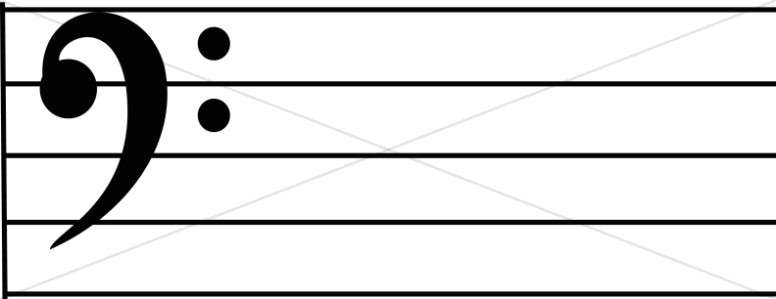In our first lesson we learned that music written on a staff. The staff is made up of 5 lines and 4 spaces, and is broken in to smaller sections called measures by using bar lines. We also learned that each line and space in the staff has a name and that a note can be identified by what line or space it sits on.
In our second lesson we learned that the names of notes, lines, and spaces, will be letter names based on the musical alphabet. The musical alphabet consists of the letters A - G of the English alphabet and loops indefinitely.
In this lesson we'll learn what lines and spaces get what letter names by learning about the G Clef.
A CLEF is a musical symbol that allows us to know which lines and spaces get what letter names. Without a clef, we cannot assign letter names to the staff. The G CLEF (see above) is one of the most popular clefs that you're likely to see on a piece of music. The G CLEF gets it's name because it tells us what line of the staff we're going to give the letter G of our musical alphabet.
Clef's are always placed on the staff at the very beginning of a piece of music. The G CLEF, when placed on a staff would look like this:
If you look carefully at the picture above you'll see that the G Clef has a large circle near the bottom that wraps around line 2 of the staff. Whatever line that large circle falls on, we will call G. In this case the G will be on line 2 of our staff. When the G is on line 2, we call the G Clef a "TREBLE CLEF"
Once we have found the G is on line 2 of the staff, all we need to do to figure out every other line and space is simply use our musical alphabet. As we go UP in the staff, we go forward in the alphabet. As we go DOWN in the staff we go backwards in the alphabet. So the space right ABOVE G will be A, because A comes right AFTER G in the musical alphabet. And the space right BELOW G will be F, because F comes right BEFORE G in the musical alphabet.
In our next lesson, we'll learn that the G (Treble) Clef is not the only clef in music. Lesson 4 introduces the BASS CLEF.




